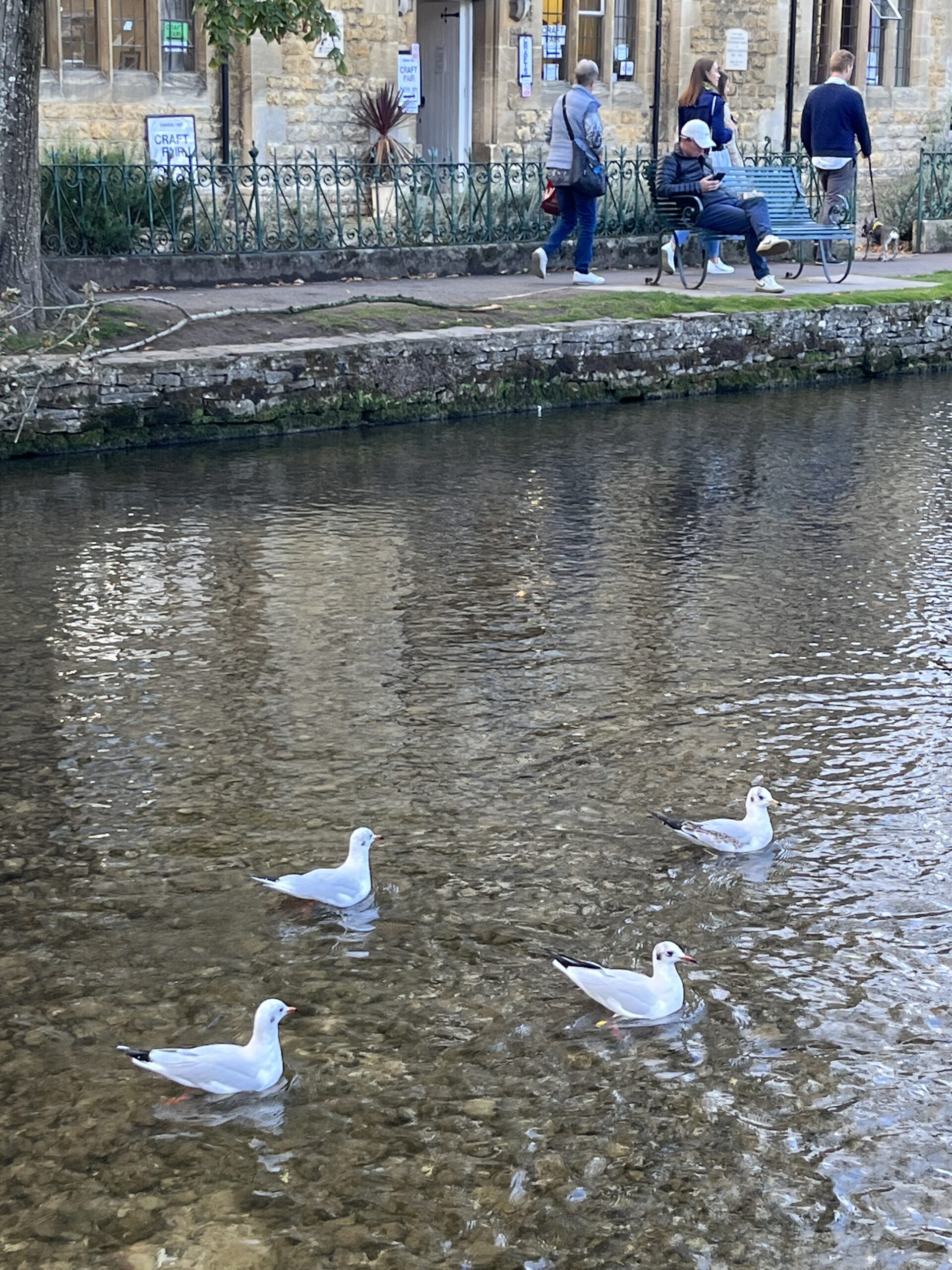
Dreaming of the Cotswolds
Two years ago, while studying abroad in London, I got to go to a little day trip in the Cotswolds. There, every single one of my English cottage core dreams came true. Recently I’ve been toying with the idea of trying to move to the UK once again, and while scrolling through my old photos from around this time I stumbled upon the changing fall colors and pre Halloween decorations adorning Cotswolds villages. The beauty had me feeling inspired, so I thought this would be a great chance to reflect on my time, photos, and do a little more research on what makes the area so charming.
A Brief History
Before becoming a picturesque destination featured in every Rick Steve’s guidebook, the Cotswolds was making a name for itself through the wool trade. The Lion, the variety of sheep found in the area, provided beautiful wool sought after throughout all of Europe in the middle ages. The money coming in from this trade allowed for architectural feats in the area, with “wool” churches popping up, still adorning the villages today and adding to the classic charm the Cotswolds is now recognized for.
While wool production ceased towards the beginning of industrialization, many historic buildings survived, paving the way for it to become a quiet retreat in the modern era. These small villages are now synonymous with many of my own personal comfort films like The Holiday, Harry Potter, Pride and Prejudice, and Stardust.

The famous Cotswolds cottage in Nancy Meyer’s “The Holiday”
My Day in the Cotswolds
I spent the day in Bourton-on-the-Water, known as one of the most picturesque towns in the area. We spent the day wandering around the town, and while on my next visit I would love to hop from place to place, this was a lovely area to explore. Things felt very quiet and small, exactly what every postcard promises. Elderly couples strolled along the river hand in hand, while families with young children could be seen enjoying scoops of ice cream
Dotting the town were antique shops filled with copper pots and linens, souvenir stores, and all the English ceramics you could dream of. I stumbled upon a local craft fair- where I still regret not purchasing the sweetest knit baby vest that I could eventually pass down. One of my favorite souvenirs from my entire time in the UK was picked up here, a Emma Bridgewater mug with an illustration of a classic cotswolds village. If you are looking for Burleigh pottery to bring home, you’ll find plenty here. While I didn’t try a classic Cotswolds cream tea, I did find one advertised that looked very tempting.



The thing that constantly phases me as an American, and a West Coaster more specifically, is the pure maturity of everything on this side of the atlantic. Back in my California hometown, I think the 1930s house where my parents is a beacon of history. Meanwhile in the Cotswolds every building is from at least the 1800s. My home wasn’t even officially part of the United States then. It’s easy to say that this antiquity shapes the identity of England. A charm of the past, but perhaps to some also a shackle. I had never realized the deep classism that still existed within the UK until my time taking classes abroad. Here, in a sleepy village that I assume just oozes comfort and tranquility, is a place where for hundreds of years most people would be reliant on the temperment of their local aristocracy. And before that, would have been used as soldiers to fight a king’s claim to the throne or serfs unable to break from their mandated servitude. So of course, even after all these social bonds have been broken, something as simple as money could not erase their shadow. Whereas in the United States, money and success means more than any family history.
On a happier side however, the history and age of each of these buildings leaves a romantic like me in awe. To imagine touching a cobblestone that was walked over 200 years ago, perhaps by a woman donning a bonnet and thinking about her heartthrob on a local farmer. Or a local housewife who had just purchased a novel by an unknown Jane Austen. The beautiful and horrible thing about history is the stories and human emotion is connects us to. And I can’t help but dream of it when in a little village such as this one. I think, after further reflection, that is what makes the Cotswolds so charming. The ability one has to be fanciful while walking the streets, transported to the 1940s war effort, or the emergence of railways connecting the country in the Victorian age, and so on. I’ve put this picture below to just give a little glimpse, I mean how could you not be fanciful when looking at buildings like these.

Even with my little historical tangent, I hope that I’ve been able to express the wonder that the Cotswolds inspired in me. Driving through rolling hills and fields of course lends itself to dreaming, but this place deserves dreams. I think it is that fancifulness it brings on that is so special, and why I love the United Kingdom as a whole. From its surface level charm of antique shops and lazy ducks dotting the river, to the deeper dreaming it brings on (both romantic and philosophical, it is a place that has a special little spot in my memory.


